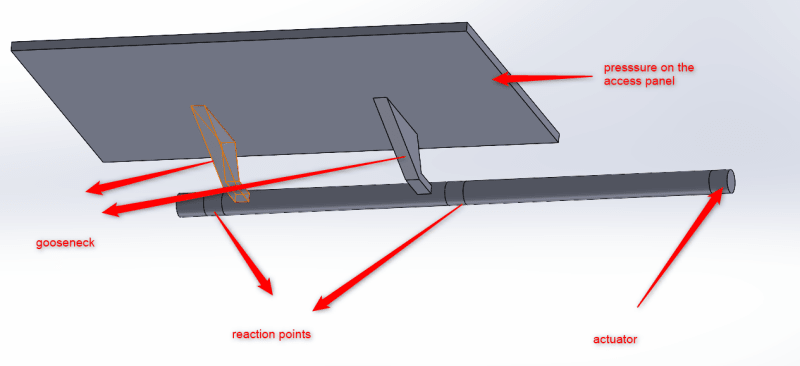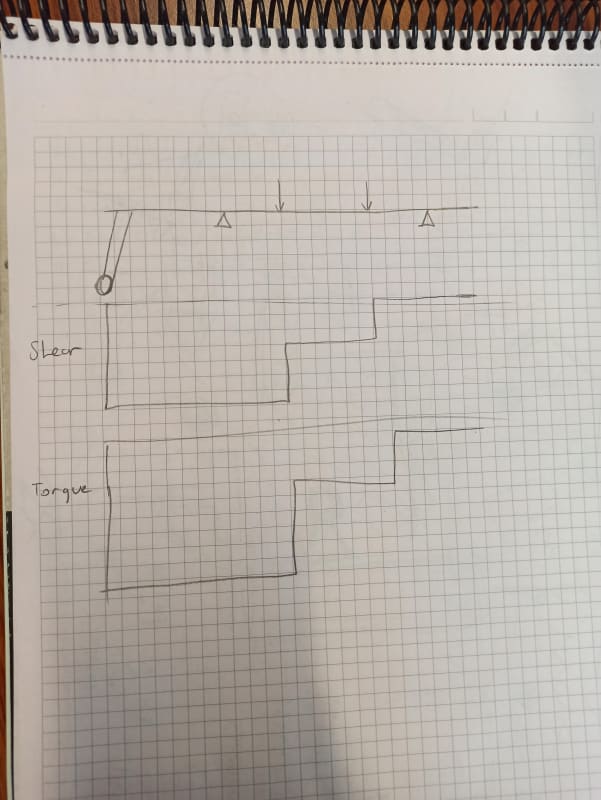yeah, sorry, nope.
presumably you are looking at the shaft.
the door has two attmts (to the shaft). The applied load is presumably normal to the door. So at the shaft there will be a shear load (= applied) and a moment (which is torque on the shaft).
Now you can work out how the airload on the door distributes itself between the two attachments (or you can say equal loads, to get the solution going).
I would solve for torque first. There will be a load applied to the actuator arm (presumably), something maybe normal to the arm, or maybe acting along a defined line of action; but creating torque on the shaft. Now, this load may be determined by things like system pressure (so it may exceed the torque from the airload). This is ok; I suspect the shaft has a "stop" on it for just this condition, so it opens only so far. The stop will create the balancing torque. If this is a simple problem, then maybe you can put the actuator force is some convenient direction (like parallel with the airloads). Not the torque of the actuator is the same as the applied, but the force can be different if the torque arm is less.
Now you have all the loads applied so now you can solve for the reactions ... presumably the shaft is mounted into a couple of bearings (the "reaction points").
This needs equations of equilibrium, presumably in two directions (as I doubt all the forces are in the same direction. I'd start with the applied airloads as one direction ("x") and an orthogonal second direction "y". Maybe you can simplify the problem and say the actuator load is in the same direction (well, opposite) as the applied airload ... with all the forces in direction you can solve the actuator reactions more easily (sum Forces in one direction, sum moments about one point ... use one of the reaction points). Maybe in your case you can make the actuator arm the same as the airload arm, so the actuator force is equal to the airload. Note, this satisfies one equation of equilibrium, but there will still be reactions (they'll be a couple (so no nett force).
"Hoffen wir mal, dass alles gut geht !"
General Paulus, Nov 1942, outside Stalingrad after the launch of Operation Uranus.



